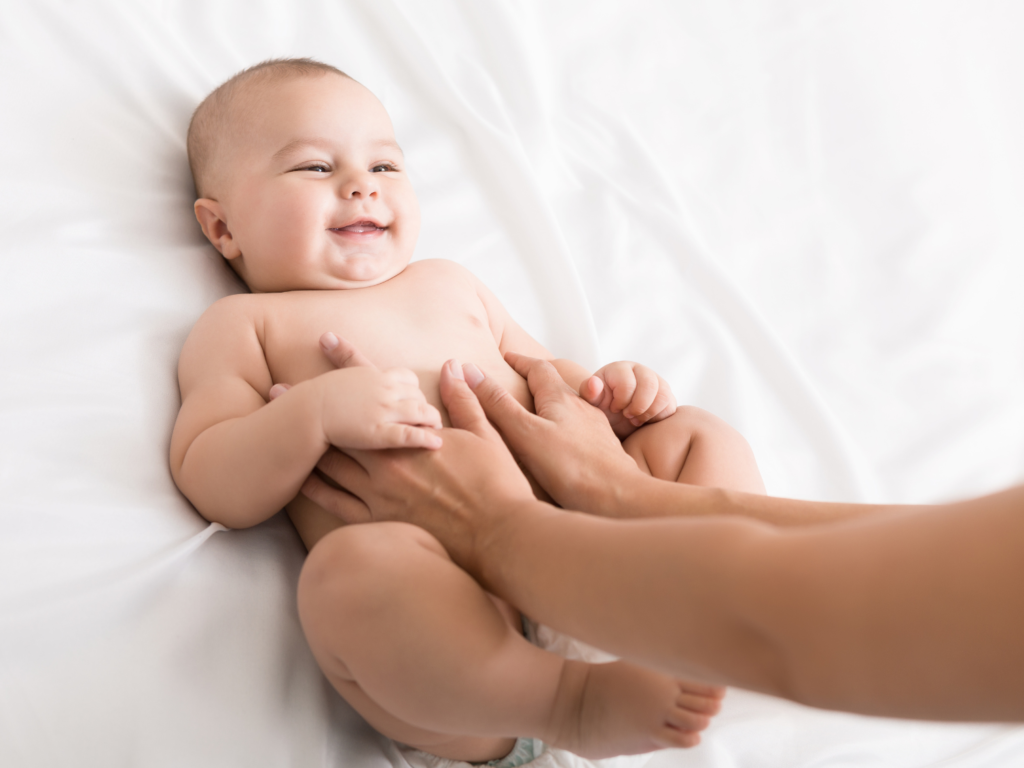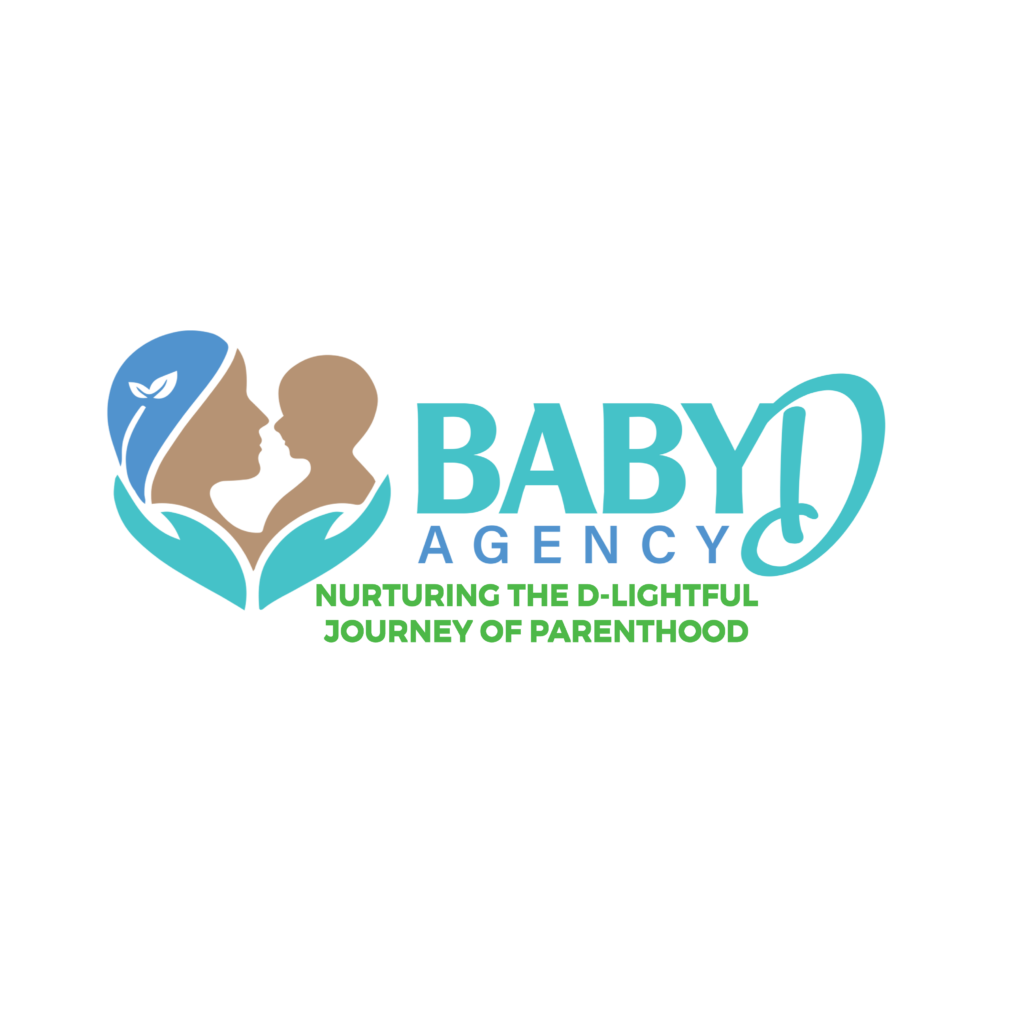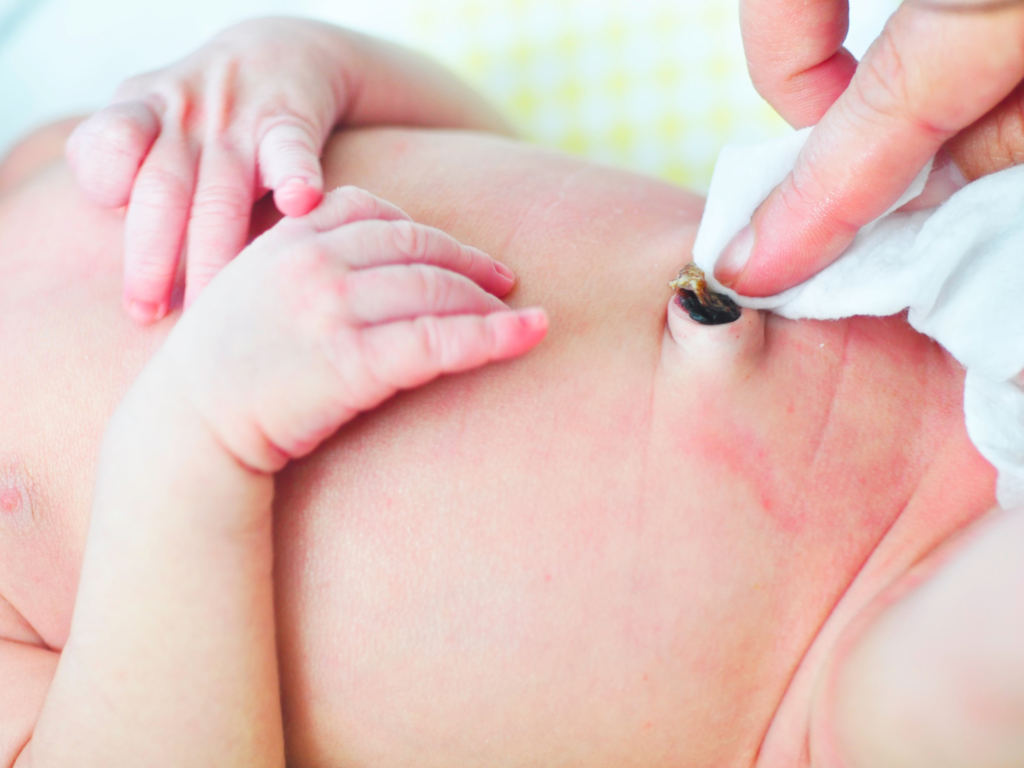The belly button area of a newborn baby is extremely delicate and requires very gentle care. While it’s healing after the umbilical cord falls off, it’s important to keep the area clean to prevent infection. Proper hygiene can help avoid omphalitis, an infection of the umbilical stump, which can be serious in newborns.
In this comprehensive guide, we’ll go over when you can start cleaning your baby’s belly button, supplies you’ll need, step-by-step instructions, signs of infection to watch for, and frequently asked questions. With the right information and care, you can keep your little one’s belly button clean, dry, and healing properly.
Knowing When It’s Safe to Clean the Area
It’s important not to try cleaning the belly button until the cord stump has fallen off on its own. This usually happens within the first 1-3 weeks after birth. The cord stump will dry out, turn black, and eventually detach completely. Do not try pulling or cutting the cord stump off yourself, as this can cause harm.
Here are some signs that the cord stump is getting ready to detach:
- The stump is shriveled, blackened, and dried out
- The skin around the base of the stump looks red, inflamed, or swollen
- A foul odor is coming from the stump area
- The stump feels loose when gently touched
Once the stump falls off, the belly button can be gently cleaned at each diaper change. Avoid getting the area wet or cleaning it until the cord has detached on its own. The stump falling off opens the area up to infection, so cleaning should begin immediately after it detaches.

Gathering Recommended Cleaning Supplies
Before cleaning the belly button, gather together the supplies you’ll need:
- Cotton swabs or a soft, clean washcloth
- Warm water
- Mild soap or baby body wash/shampoo
- Clean towel to pat dry
- Diaper, tissue, or more cotton balls to absorb moisture
- Non-alcohol wipes (optional)
- Petroleum jelly or coconut oil (optional)
- Sterile gauze to cover the area (optional)
Avoid using rubbing alcohol and hydrogen peroxide, as these can dry out and irritate the sensitive skin. Harsh soaps should also be avoided. Warm water and a gentle baby cleanser are ideal for cleaning the area safely.
Step-By-Step Instructions for Proper Cleaning Baby Belly Button
Cleaning your newborn’s belly button takes only a minute or two each time. Follow these steps:
Step 1: Wash Hands and Assemble Supplies
Start by washing your own hands thoroughly with soap and warm water. Newborns are susceptible to infection, so handwashing is crucial. Then gather all the necessary supplies and place them within easy reach.
Step 2: Dip Cotton Swab in Warm Water and Gently Clean the Area
Moisten the cotton swab, cloth, or cotton ball with warm water and a small amount of the mild cleansing solution. Gently wipe around the outer edges of the belly buttonhole. Try not to insert the swab or cloth deep down into the navel itself, as this can cause pain or injury.
Cleanse the area around the belly button well, but do not rub vigorously. The skin is extremely delicate. Be sure to get the outer folds, creases, and any dried discharge.
Step 3: Pat Dry
Use a soft, clean towel or tissue to gently pat the belly button area dry after cleaning. Avoid vigorous rubbing. Allowing moisture to remain can lead to infection, so patting it fully dry is important. You can also place a dry cotton ball or piece of cloth over it to draw out any remaining moisture.
Step 4: Apply Petroleum Jelly or Coconut Oil (Optional)
Applying a very thin layer of petroleum jelly or coconut oil can help keep the skin moisturized as it finishes healing. Both have antimicrobial properties to fight infection. Use a clean finger or cotton swab to gently apply.
Step 5: Cover with Sterile Gauze (Optional)
For extra protection, cut a small square of sterile gauze and place it loosely over the belly button. Avoid using regular adhesives. You can secure it with medical tape or a gentle baby-safe adhesive if needed. This can help shield the sensitive skin.
Signs of Infection to Watch For
It’s normal to see a little clear or yellow discharge as the belly button heals. However, call your pediatrician promptly if you notice any of the following:
- Persistent foul odor
- Spreading redness
- Pus or cloudy discharge
- Worsening swelling and inflammation
- Bleeding or oozing from the site
- Fever over 100.4°F
- Excessive fussiness or crying from your baby
These could indicate an infected belly button, which requires medical treatment. Omphalitis can progress rapidly in newborn babys so contact your doctor right away.

How Often to Clean the Area
During the first month after the cord stump falls off, the belly button should be cleaned at every diaper change. This helps prevent any buildup of bacteria.
After the first month, continue cleaning it at least once a day until it has fully closed up. Clean more frequently if the area seems irritated or dirty. Keep cleaning the site until the belly button has completely healed, usually within 1-2 months.
Common Cleaning Mistakes and Risks
Although cleaning the belly button is simple, there are a few risks and mistakes to avoid:
- Using alcohol-based wipes can dry out the skin leading to cracks and irritation.
- Inserting cotton swabs or cloths too far down into the belly button hole can cause pain and injury. Clean only the outer edges.
- Not patting the skin dry fully can allow moisture to linger, increasing infection risk.
- Vigorous scrubbing or rubbing can damage the extremely delicate healing skin. Always be gentle.
- Forgetting to wash hands thoroughly before cleaning the area can introduce bacteria.
FAQs
How long does it take for my baby’s belly button to fully heal after the cord falls off?
A: It typically takes 1-2 months for the belly button to fully close, heal, and appear like a “normal” innie belly button. However, every baby heals at a slightly different rate.
What should I do if the belly button area smells foul?
A: A bad odor likely signals an infection. Contact your pediatrician right away if you notice any foul or fishy smell from the site.
Is light bleeding normal? What if the belly button bleeds a lot?
A: A tiny bit of bleeding can sometimes occur and is usually normal. However, apply gentle pressure and call your pediatrician if you notice excessive bleeding from the umbilicus.
Can I bath my newborn before the cord stump falls off?
A: Yes, you can bathe your baby gently even with the cord stump attached. Avoid submerging the stump underwater. Keep the area dry.
What if my baby’s belly button doesn’t close up properly?
A: In rare cases, the belly button may remain open too long or fail to close. Consult your pediatrician if the navel stays open longer than 2 months. Surgery may be required to close it.
In Conclusion
Caring for your newborn’s belly button does require some extra attention, but with a gentle approach and the right information, you can easily keep the area clean and prevent infection. Monitor the site closely, especially during that first month as it finishes healing. With proper hygiene and prompt treatment for any signs of infection, you can help your little one’s adorable new belly button heal properly.

